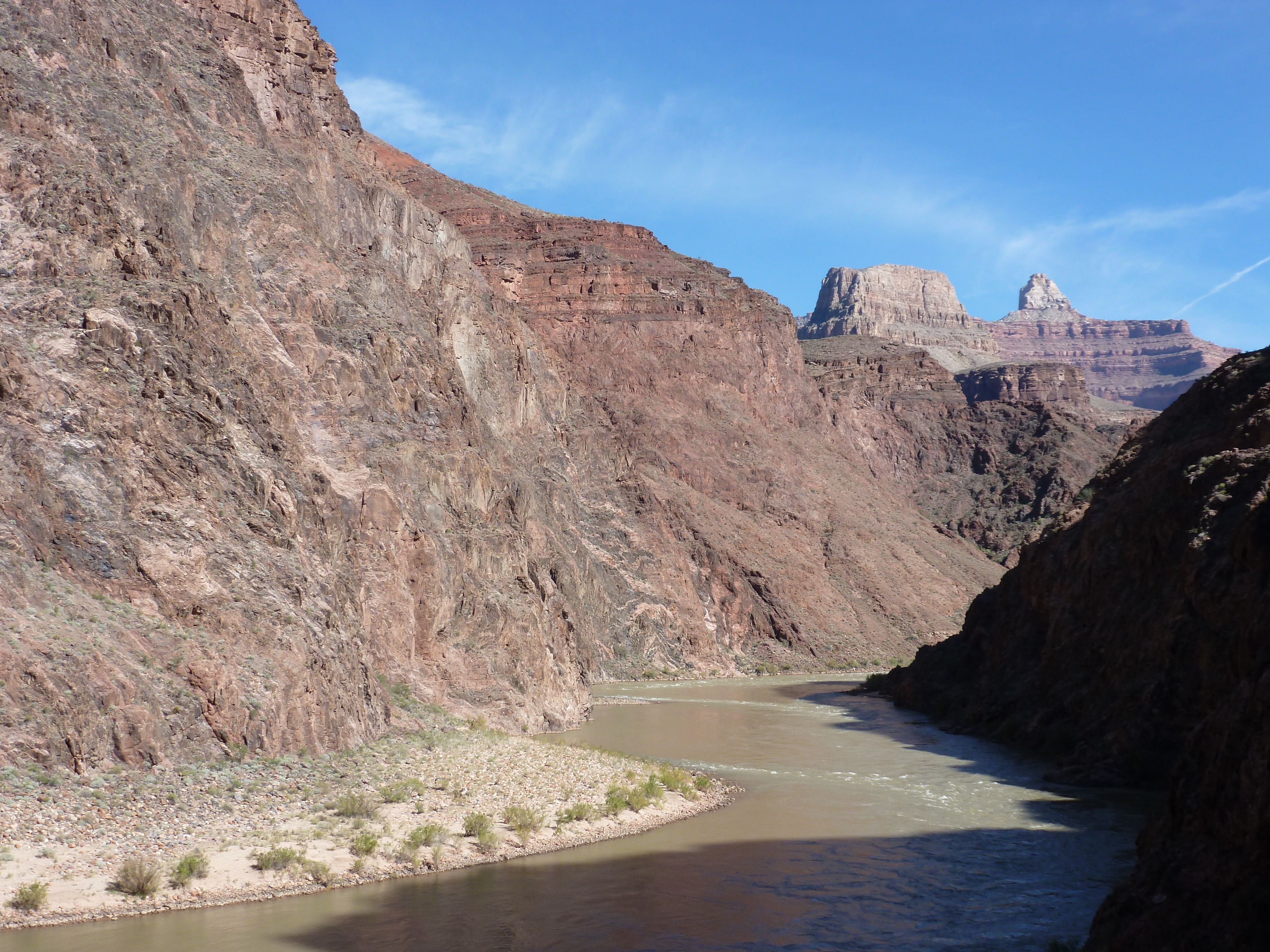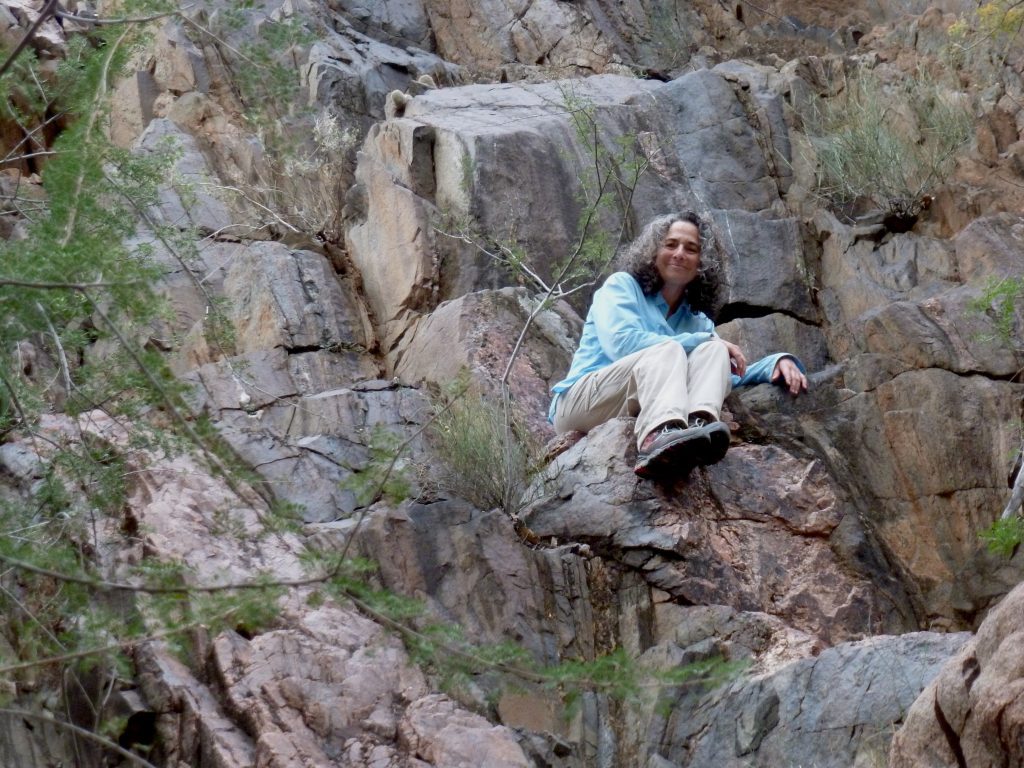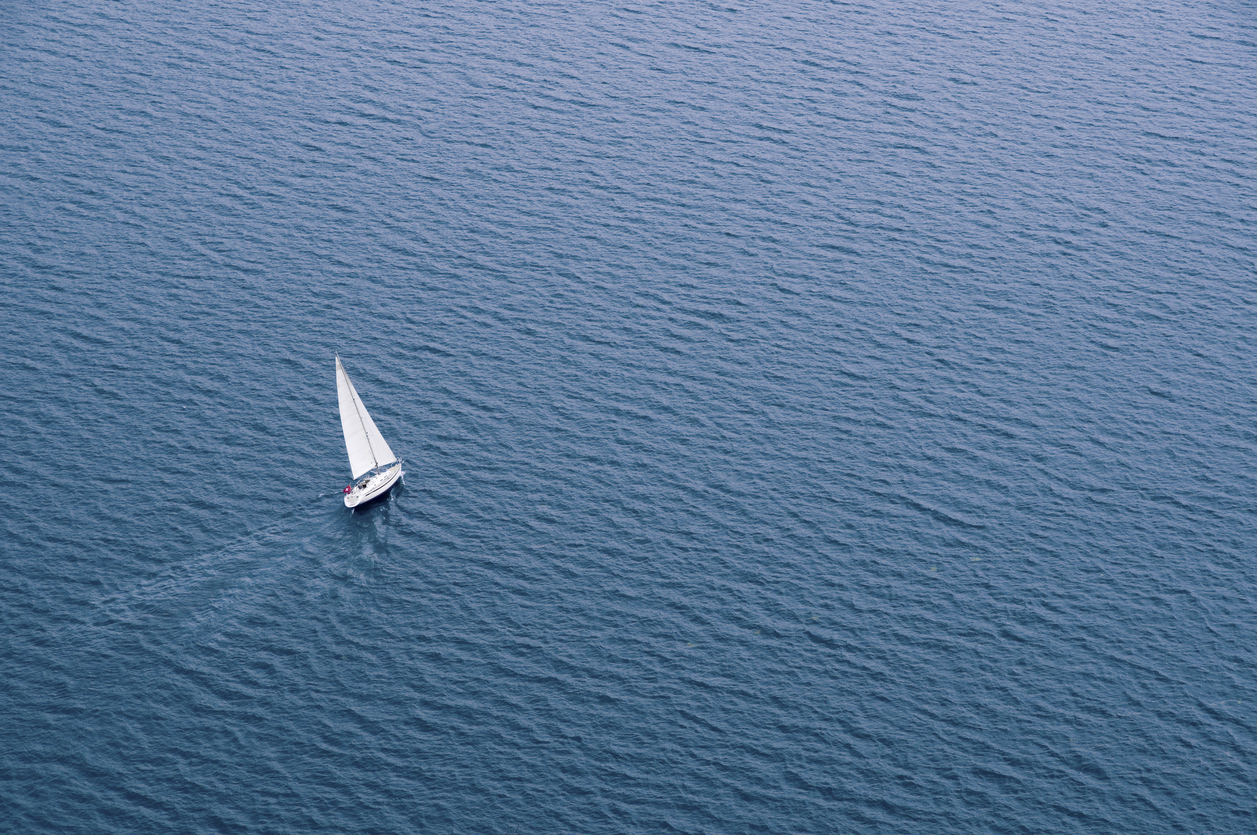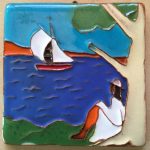
Vishnu Schist and Zoroaster Granite
Sometimes I don’t hold the rock, it holds me. Some rocks don’t get stuffed into a pocket, then put on a shelf. Sometimes I nestle into a nook where I fit as well as a rock might fit in my hand, and make a memory to hold. Last October, backpacking into the inner gorge of the Grand Canyon (where the myriad rocks are oh-so-tempting, but I only take pictures and only leave footprints) was one of those times.
I went with my friend, Cathy. She yearned to experience the canyon, a place she’s described as her inner landscape, though she’d never seen it except in photographs before. To witness her eyes widening at her first look over the rim into and across the canyon, was one of the best views (and that’s saying something) of the trip for me. Then we swung our 35+ pound packs of gear and food and water on and began the descent. We shared 5 amazing days of hiking, exploring, discovering, and being. She even let me go on and on about the geology, from the scale of a bit of mica to the deposition of the formations into which the canyon is carved.
After settling into camp on the fourth day, I scrambled up a wall of Vishnu Schist and Zoroaster Granite. The rocks of the Vishnu Formation, predominantly mica schists, are the oldest in the Grand Canyon. Approximately 2 billion years ago, 25,000 feet of sediments were deposited and volcanics extruded onto the ancient sea floor. During an orogeny, a mountain-building episode, 1.7 billion years ago, those rocks were folded, faulted, and uplifted (metamorphosed), and intruded by the Zoroaster Formation, predominantly granite (also subsequently metamorphosed to form granite gneiss). The resulting mountain range is believed to have been 5-6 miles high. Over the next 500 million years, the mountains were eroded until only their roots remained, and today, the roots of those mountains form the steep walls of the inner gorge.
Geologist learn to think in terms of hundreds of millions of years, thousands of feet of sediment being deposited, and mountains being uplifted by miles pretty casually. But understanding the processes that shape the earth makes them no less awesome, perhaps even more so, and that last evening in the canyon, I mused on the rocks’ age and beauty from a big-enough-just-for-me ledge.
The next morning at dawn, Cathy and I began our hike out, 7 steep miles from the river to the rim on the South Kaibab Trail. We climbed through 2 billion years of geologic time and a place of such splendor and complexity that I will never know it all, no matter how often I explore it. And maybe that’s the point, I can never know it all. But I can always learn, wonder, and wander, and almost always find the perfect rock to hold me for a while.
.
Tell me, what sparks your wonder?








Recent Comments